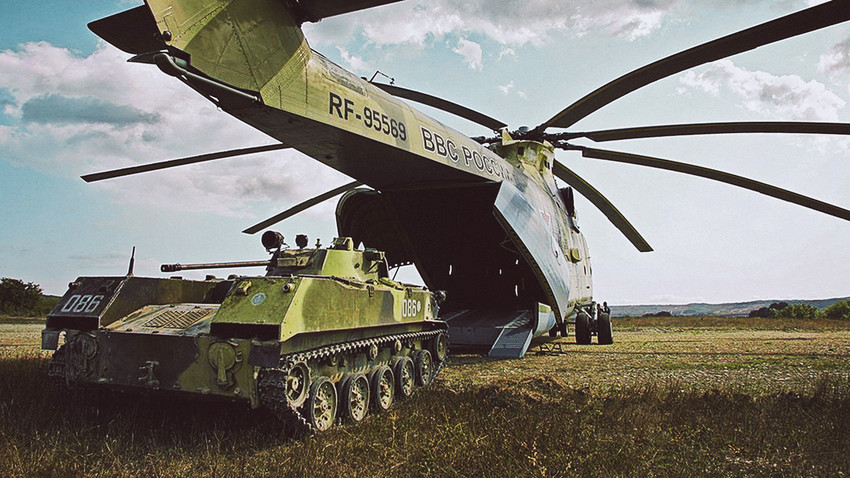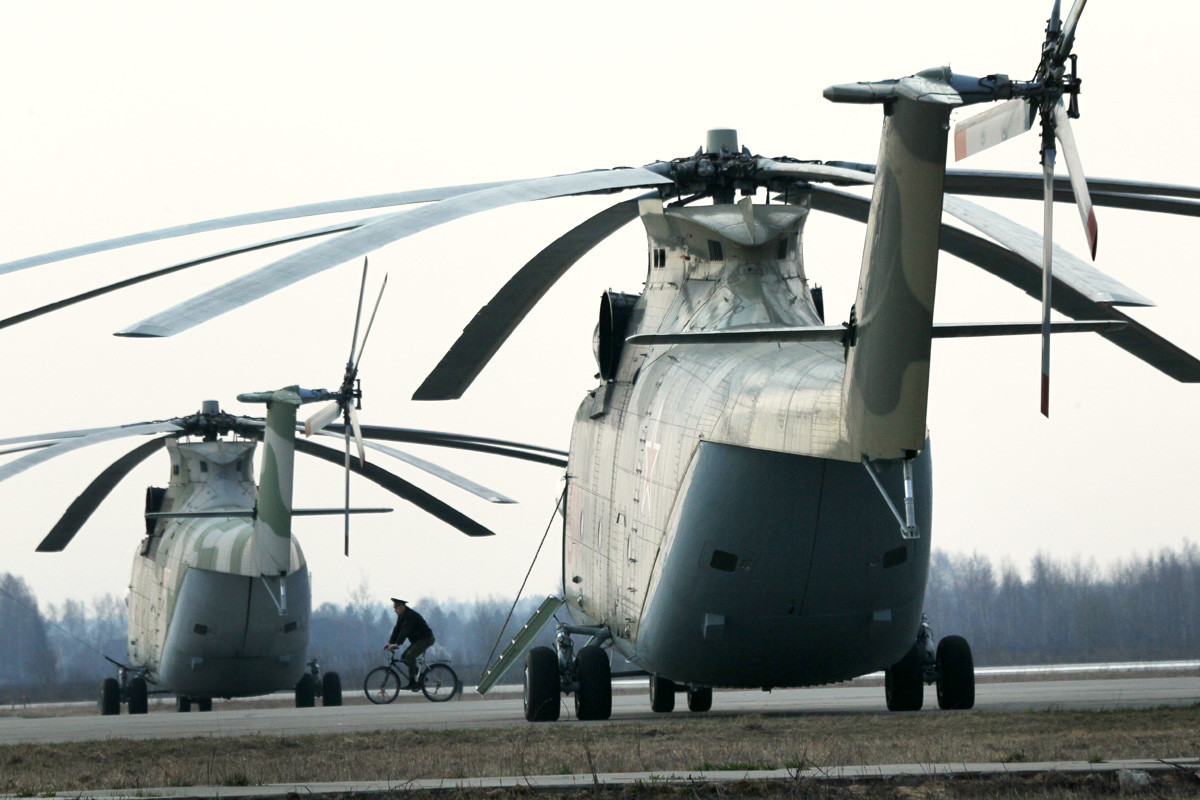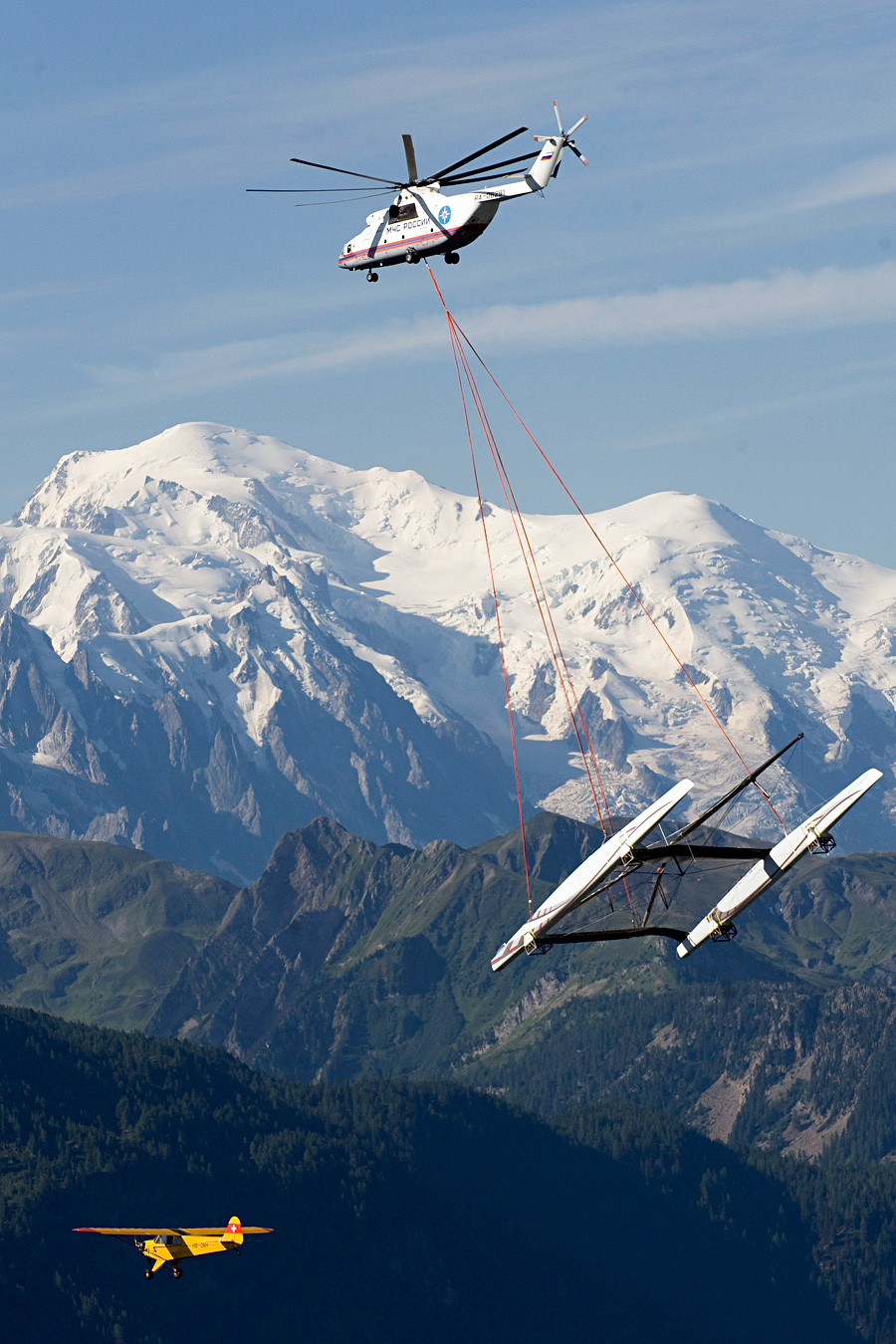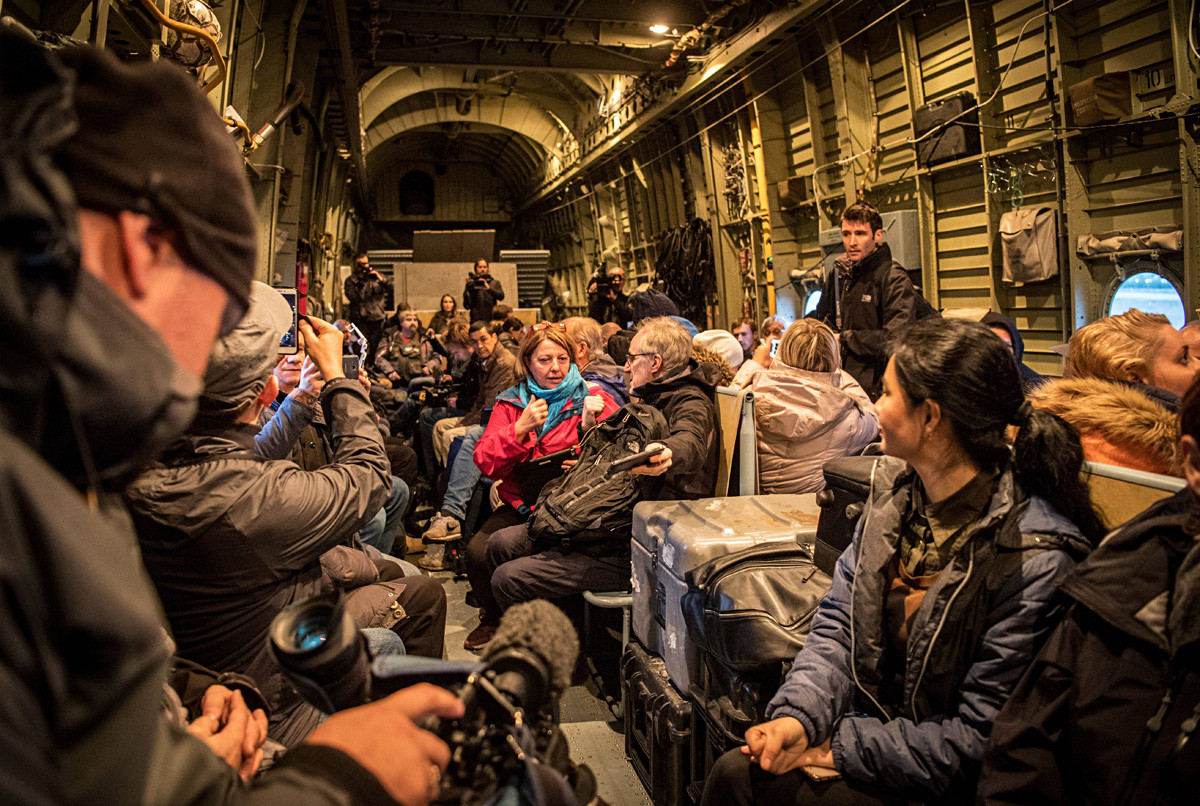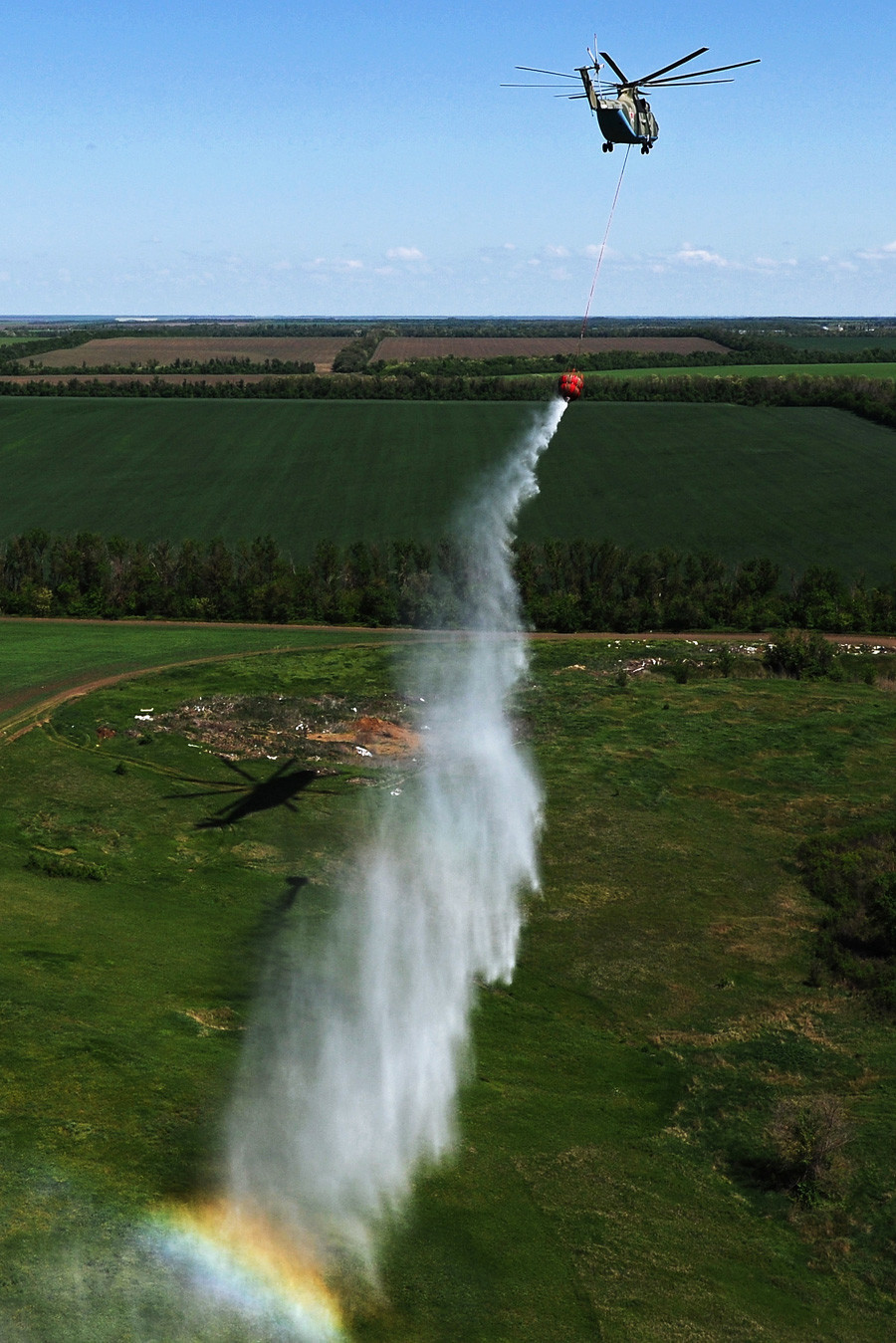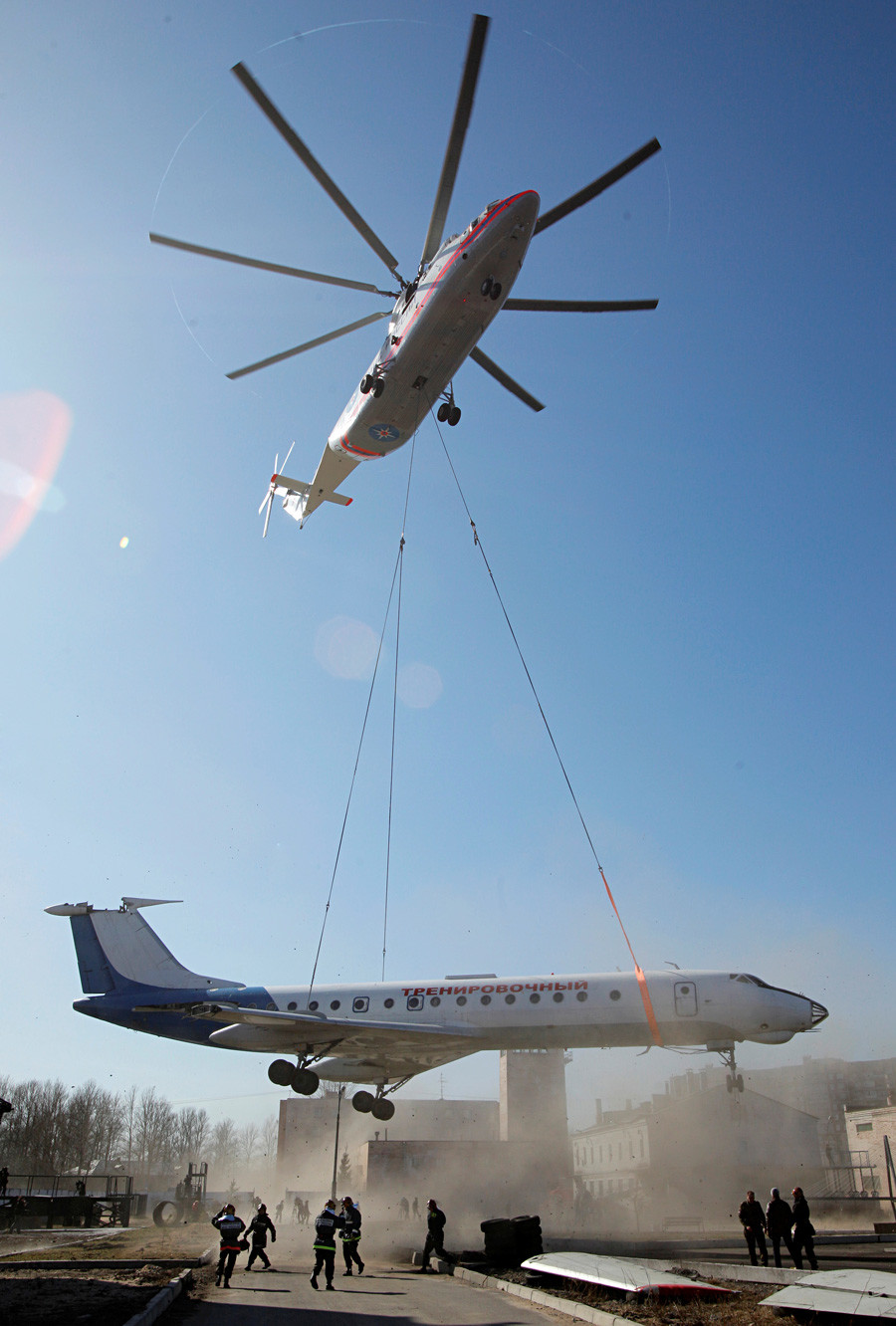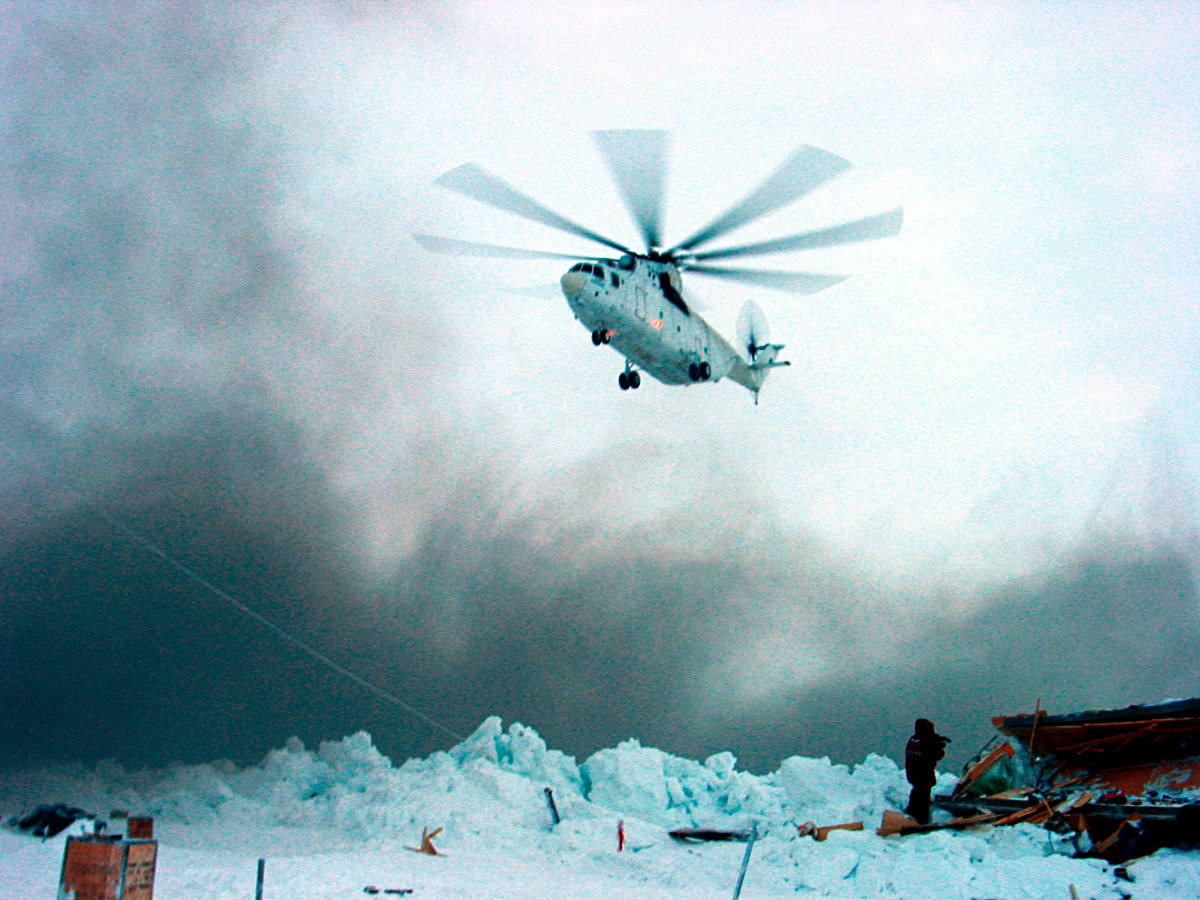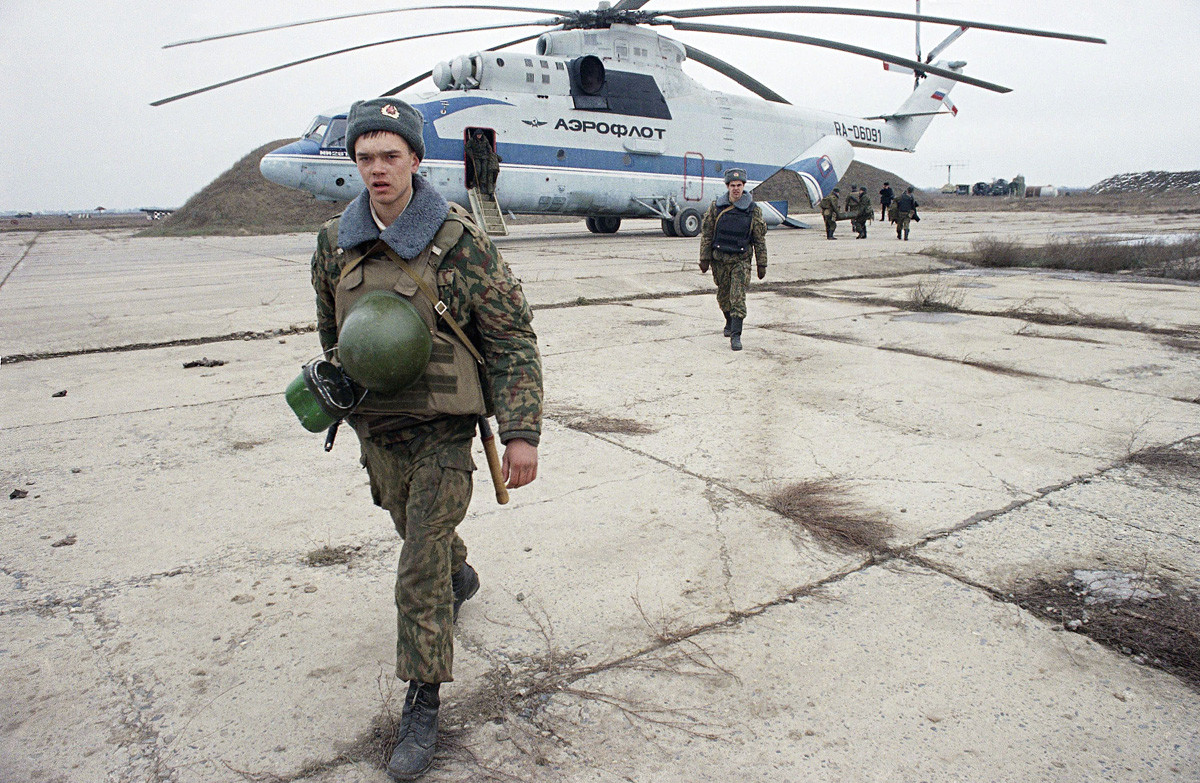The largest chopper in the world, the Mi-26, transports trucks, tanks, other helicopters, huge planes, and even polar bear cubs with ease.
This giant chopper is the pride of the Soviet and Russian helicopter industry. At 40 meters long the Mi-26 is the largest helicopter in the world, with 318 built to date.
The flying mammoth can carry up to 20 tons of cargo, either in its belly or by using cables.
Almost 90 paratroopers comfortably fit inside the chopper, or 60 wounded soldiers lying down. However, in some cases over 100 people have squeezed inside an Mi-26, which boasts a cargo bay big enough to accommodate a basketball arena.
The Mi-26 made its debut in Afghanistan in 1984. The helicopter transported combat equipment, evacuated the wounded from the battlefield, and salvaged damaged Mi-8 helicopters.
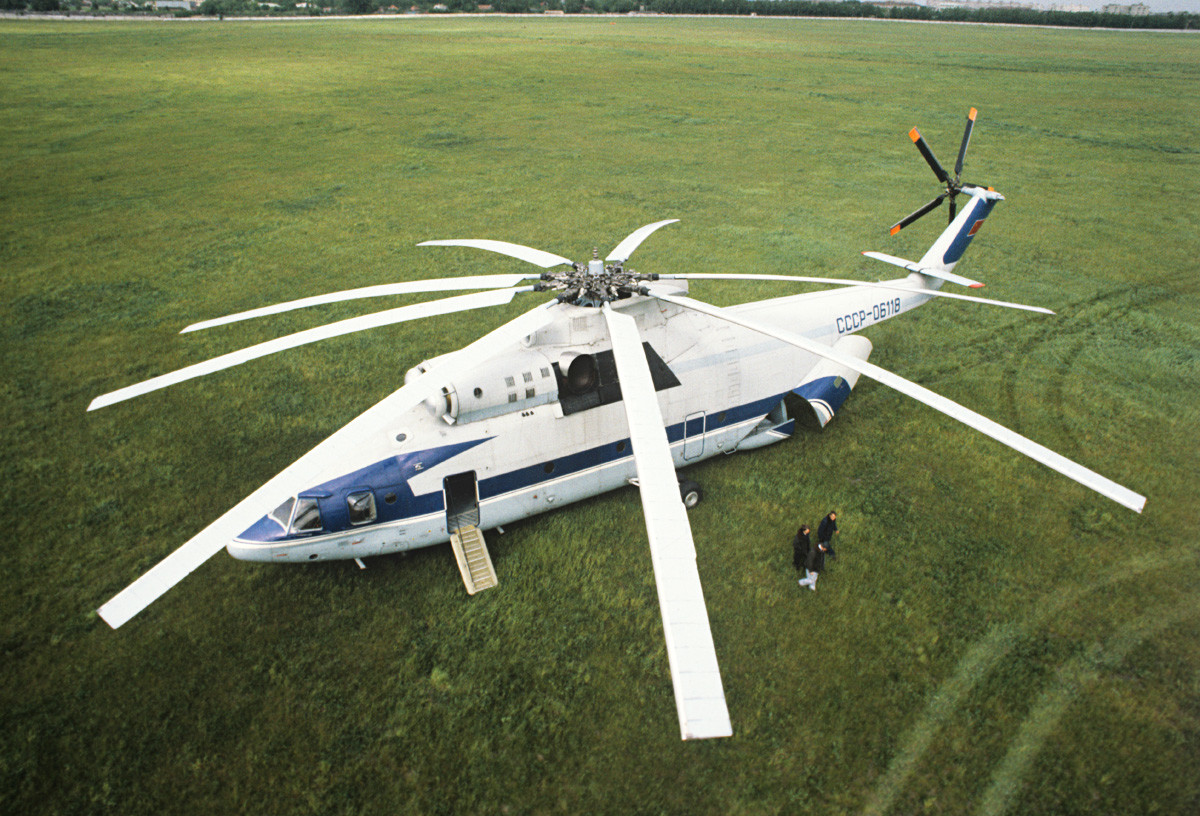
Vitaliy Arutjunov/Sputnik
In 2002 the iconic chopper entered Afghanistan’s skies once again. It was used to evacuate two damaged MH-47E Chinook helicopters and one AS532 Cougar from the mountains.
The helicopter carries light tanks and infantry fighting vehicles with ease, but it’s not only used by militaries. The Mi-26 is employed in the industrial sector to transport materials and help with construction - it’s even used to fight fires. It was also called upon to rescue people following the Chernobyl disaster.
In 2009 an Mi-26 carried a Tu-134 aircraft from Pulkovo Airport to the EMERCOM training range as St.Petersburg residents watched in amazement.
The aircraft doesn’t always carry heavy cargo. Once a chopper was called in to save a polar bear cub who had lost his mother in the Arctic. The lucky creature was saved and taken to a natural reserve.
But the title of “most unusual Mi-26 cargo” surely goes to a 20-ton, frozen woolly mammoth...
Unfortunately, the world’s largest chopper is connected with the deadliest helicopter crash in history. In 2002, during the Second Chechen War, an Mi-26 was blown out of the sky by Chechen militants, killing 127 people on board.
If using any of Russia Beyond's content, partly or in full, always provide an active hyperlink to the original material.
